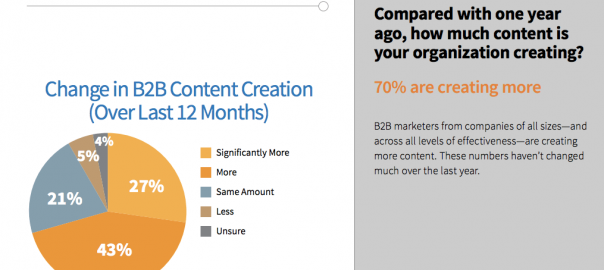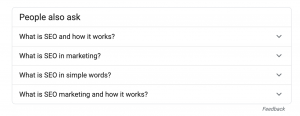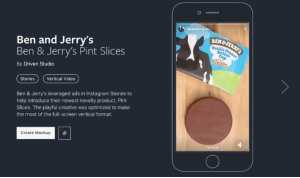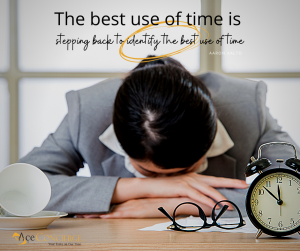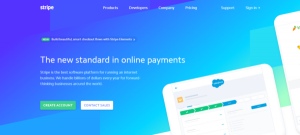Most marketing strategies are based on content creation. According to the “B2B Content Marketing” report held by the Content Marketing Institute, 70% of all B2B marketers are distributing more content compared to the previous year.

data credit: Content Marketing Institute research “B2B Content Marketing- 2015 Benchmarks, Budgets, and Trends – North America”
The same source indicates that blogging is upon the most effective tactics and it is not going to change anytime soon. Moreover, marketers who focus on blogging are
13 times more likely to increase their revenue. Quality and regular blogging can provide your business with several benefits such as: generating leads, building brand awareness and authority and developing an active community. Therefore, to use your blog’s full potential, you should not only make it worth reading but also properly optimize it for SEO. Today, I’ll tell you how to implement SEO tips & tricks and make the best use of your company blog!
#1 Find a long tail keyword for each post
First and foremost, each of your blog posts should be optimized for just one major keyword. Of course, there will be tons of different phrases in a text anyway. It is highly recommended to target long tail keywords because of a very compelling advantage: it’s where 70% of the traffic lies. Just take a look at the Search Demand Curve below:

Long tail keywords are less competitive and highly specific at the same time. They bring more valuable traffic to a website because of more relevant visitors who tend to convert better. You can achieve the best results if you mix different head keywords with long tail search terms. Implementing into your article multiple variations of the same keyword will help you reach a wider range of phrases and avoid keywords stuffing.
Google’s Keyword Tool can help you with finding the ideas for accurate long tail phrases because it captures the average monthly searches for your head keyword and its long tail variations.

screen from Adwords Keyword Planner
One of the most important SEO tips is a method for finding correct long tail keywords using Google.com. Insert your head phrase into the search bar and check what related terms Google suggests. Afterward, scroll down and see the related searches listed at the bottom of the page.

screen from Google search bar

screen from Google’s SERPs
#2 Place your keywords strategically
Random keyword placement won’t help you drive organic search traffic. If you are aiming to maximize content effectiveness you should learn how to place them in the correct way that flows with your writing. The following locations will provide you with the best results:
- Use keywords in permalinks because they help search engines understand what your text is about and reveal the topic of your article in a super concise way.
- From the onset, a title informs the reader about the content, making it the perfect place for your focus phrase. Keep your title under 70 characters (including spaces) because it is the maximum number of characters that fully displays in the search results.
- The meta description should be compelling, reflect your core content and include search terms. It doesn’t have any direct impact on your rankings, but it is exposed in the search results and helps your audience identify the topic. That makes it the most impactful trigger for improving the click-through rate from the search results pages.
Check the permalink, title and meta description displayed below:

Here you have two examples of good meta descriptions:


- Make sure that your keyword appears naturally and at a normal pace throughout the body. You can bold it once or twice and write in italics. However, be careful to not overuse your phrase because search engines penalize for keyword stuffing. Moreover, always check the keyword density of your content. Keyword density is the keywords to content ratio in a page. In order to make your content easy to read, keep an optimal keyword density for any particular keyword below 3%.
- Place your keyword in the heading (H1 tag) and at least once or twice in the subheadings (H2 tag).
#3 Optimize your visual content effectively
Your images should add value to your content and explain it, too. Describe your images correctly and make them easy to find and read for search engines.
Determine your functional requirements and choose between these universally accepted formats:
- JPEG is recommended for photographs, screenshots and images with gradients because it supports the 24-bit color format, which preserves sharp details and the subtle variations in hues.
- GIF is a small palette, an 8-bit color format. It works for illustrations, such as colorful logos, line art, types and animation.
- PNG works when you need to preserve fine detail with high-resolution images, but it usually takes up more space. Therefore, before using PNG, check if it can be replaced with JPEG. PNG uses an 8-bit as well as a 24-bit color palette.
Make your images’ filenames descriptive and related to their content.
Image Filename Example:

Describe alt text in a people-friendly way and make it similar to the filename. Take a look at the alt tag optimization example below provided by Google Search Console Help:

It is not necessary to edit your website’s code. All you need to do is complete the alt tag in, for instance, the WordPress publishing panel.
 Image Details WordPress Editor
Image Details WordPress Editor
Don’t forget about the context. It is important that the particular image description is mentioned within the surrounding text on a page. It’s best to place a related visual close to its textual context.
There is no image file size restriction according to Google. However, in terms of user experience, you still need to compress them and make sure that the particular page loads quickly no matter how many pictures you fit in. Don’t be afraid to compress your image because weight savings are often significant. If you use WordPress CMS, or any other publishing platform, it is really easy to adjust your image size:

Image Size Editor by WordPress
Consider using high-quality images because they look more professional and sharper in Google Image Search. Such images also generate traffic and inbound links, in turn, increasing the likeliness of being shared.
Pro-tip: When linking to any image, make sure that the anchor text clearly points out the destination of the link and describes what the particular visual is about.

#4 SEO tips for inbound and outbound links
Links are an essential part of any successful blog. They increase your trust and authority. In order to identify the content relevancy, search engines look at pages your article is linked to. The same works for linking from your blog posts. At every opportunity, create internal links to the previous content you have published. This tactic helps you generate more traffic, keeps your visitors on your website and indicates to search engines other reliable sources on a particular topic.
Furthermore, it improves website navigation, distributes page authority throughout the site and defines the hierarchy and architecture of a website.
On the other hand, you should be mindful of the external links and their quality. Make sure that you are always linking to high value sources. Keep in mind that the perfect link to content ratio for SEO purposes is a one link for about 120 words of content, minimum. It is mathematically proven that too many external links drive your link juice away to external websites. As a result, your own pages receive less of it, and consequently they are less likely to rank high in search.
In addition, choose the appropriate keywords for the link’s anchor text carefully; search engines include this as a ranking factor. You can improve the rankings of linked pages for those particular keywords.

data credit: Copyblogger – SEO copywriting
Interestingly, for many years it was necessary to keep website links at an 100 per page maximum. Google used to index only about 100 kilobytes of a page and therefore it was reasonable to recommend the one link per kilobyte. Fortunately, the Web evolves and now this rule is no longer applicable. The one thing Google advises is to keep your links to a “reasonable number” per page.
If you want to find out more about it, watch this video published by Google Webmasters:
Conclusion
In this part, I have focused on SEO tips concerning content creation for your business blog. Once you implement them, you will notice a positive difference in your long-term results. Wait for next week because I am going to show you other impactful components your blog needs as a part of your SEO strategy. You will learn more about the correct blog structure. Stay tuned!
PS: If you have questions concerning this topic, please leave a comment and I’d be happy to help you out.
(263)
Report Post